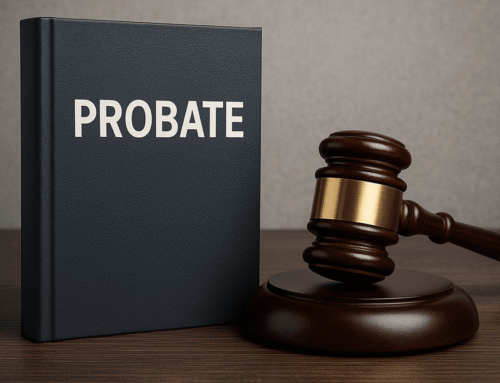As technology continues to evolve at a rapid pace, robots are becoming an increasingly ubiquitous presence in our lives. From voice-activated home assistants like Amazon’s Alexa and Google Home to more advanced robots capable of performing physical tasks such as cleaning, cooking, and even providing companionship, robotics is no longer a concept confined to science fiction. It is a reality that is gradually transforming our homes and daily routines.
While these robots hold enormous potential to make our lives more convenient, efficient, and even safer, their rise also brings with it complex legal and ethical questions that must be addressed. Among the most pressing of these questions is one that seems almost unimaginable: What happens when robots, designed to serve and assist us, are programmed to harm—or even kill—the people they were meant to protect?
The Rise of Autonomous Robots
As robots become more capable, their roles in our homes will continue to expand. Autonomous robots will not just perform menial tasks like vacuuming the floors or answering basic questions; they may one day prepare meals, manage security systems, assist with medical care, and more. Some robots could even be equipped with artificial intelligence (AI) that allows them to learn, adapt, and make decisions based on their interactions with humans and their environment.
However, this increasing autonomy raises significant concerns. With greater capabilities comes greater risk. While robots can improve our lives in many ways, they also present potential dangers, whether due to malfunctioning software, faulty hardware, or—as we’ll explore—a more sinister possibility: human intervention.
What If Someone Programmed a Robot to Kill?
Let’s consider a chilling scenario: A husband, a software engineer by profession, decides to program his family’s robot to kill his wife. Armed with the technical expertise to override the robot’s systems, he rewrites its code, instructing the robot to harm or kill. While this scenario might sound like the stuff of dystopian fiction, it isn’t as far-fetched as we might like to think. With the growing accessibility of advanced robotics and AI, individuals with the right technical knowledge could potentially manipulate these systems to carry out dangerous, even lethal actions.
This example leads us to ask a number of urgent questions:
-
Can a robot be considered an accomplice to murder?
-
Who would be held accountable for the robot’s actions: the person who programmed it, the manufacturer, or someone else?
-
What safeguards could be implemented to prevent such scenarios from occurring in the first place?
These questions highlight the legal and ethical challenges society will need to confront as robots become a more integral part of daily life.
Current Legal Framework and Its Limitations
At present, the law is ill-equipped to handle situations in which robots, particularly autonomous ones, engage in criminal acts. Most legal systems treat robots as tools or machines—meaning they have no personhood, no agency. In the case of a robot committing a crime, the law typically holds the person who programmed or operated the robot accountable.
For example, if the husband in our hypothetical scenario programmed the robot to harm his wife, he would almost certainly face prosecution for murder or attempted murder. In this case, the law is clear: the person who manipulates the robot to do harm is responsible for that harm.
However, this traditional approach to liability becomes murky when we consider the possibility of more advanced, autonomous robots. Today, if a robot malfunctions and causes harm, liability typically falls to the manufacturer. But when it comes to intentional harm—such as programming a robot to commit murder—the lines of responsibility are far less clear.
The Need for Robot Laws and Ethics
As robotics and AI technology advance, it’s crucial that we develop new laws and regulations specifically designed to address the potential dangers posed by these technologies. Some key considerations in this new legal framework include:
-
Accountability and Liability: Who should be held responsible if a robot causes harm—whether intentionally or accidentally? Should the responsibility fall on the robot’s owner, the programmer who wrote the code, or the manufacturer who built the robot? These questions need to be addressed as robots become more autonomous and integral to everyday life.
-
Safety Protocols: To mitigate the risks of robots being used to cause harm, manufacturers will need to implement strict safety features. These might include fail-safes, encryption, and “kill switches” that can prevent robots from carrying out dangerous actions. These safeguards would work to ensure that robots, even if compromised by malicious actors, are not capable of causing significant harm.
-
Programming Ethics: Just as vehicles are now equipped with safety features like automatic braking and lane-assistance to prevent accidents, robots in the home will need to be designed with ethical programming that prevents them from carrying out harmful actions. AI researchers have even suggested the creation of a “robotic Hippocratic Oath,” a set of ethical guidelines that developers would follow to ensure that robots cannot be programmed to intentionally harm humans.
-
The Role of AI in Decision-Making: As robots become more autonomous and capable of learning and making decisions, their actions may not always be directly programmed by their human creators. If a robot makes an independent decision to harm someone, should the robot be held accountable? Or should the liability fall on the developer or owner who set the parameters for the robot’s decision-making? These questions will become more pressing as AI technologies advance.
-
Privacy and Security: The rise of home robots also raises concerns about data security and privacy. Robots will collect vast amounts of personal information, which could be used maliciously or compromised by hackers. If a robot were hacked and turned into a weapon, how would liability be determined? What measures can be put in place to prevent such scenarios?
A New Legal Framework for the Age of Robots
As home robotics become more common, the legal system will need to evolve. Here are some potential steps that could be taken:
-
Robot-Specific Laws: Governments will need to develop laws that specifically govern the use of robots in private homes. These laws would need to address safety, programming ethics, and criminal liability, ensuring that robots are designed and used in ways that protect human life.
-
International Cooperation: Given that robotics is a global industry, it will be crucial for countries to work together to create consistent laws and regulations governing the use of robots across borders. These international agreements would help standardize safety protocols and establish a common legal framework for robot-related crimes.
-
AI Ethics Boards: Just as medical research is overseen by ethical review boards, robotics and AI development might require oversight by independent ethics committees. These boards would ensure that robots are designed with the highest ethical standards, preventing malicious programming and ensuring that robots cannot harm humans.
Conclusion: A Cautious but Promising Future
The future of robotics is bright, but we must tread carefully. As robots become more capable and integrated into our homes, it’s essential that we address the legal and ethical challenges they present. Robots have the potential to revolutionize our lives, making them more convenient, efficient, and safer. But with that power comes responsibility.
We must work to create legal frameworks that ensure robots are developed and used in ways that prioritize human safety and dignity. If we can navigate these complexities, the future of home robotics can be a positive and transformative force, one that enriches our lives without posing unnecessary risks. The promise of robots is immense—but it’s up to us to ensure that this technology is designed, regulated, and governed in a way that protects us all.
#AutonomousRobots #AIethics #RobotLaw #FutureOfWork #ArtificialIntelligence #HomeRobots #RoboticsLaw #TechEthics #AIRegulation #RobotSafety #RobotsInTheHome #AIinEverydayLife #RobotProgramming #TechLaw #SmartHome #AIandLaw #EthicalRobotics #FutureTechnology #RobotLiability #RoboticsInnovation




